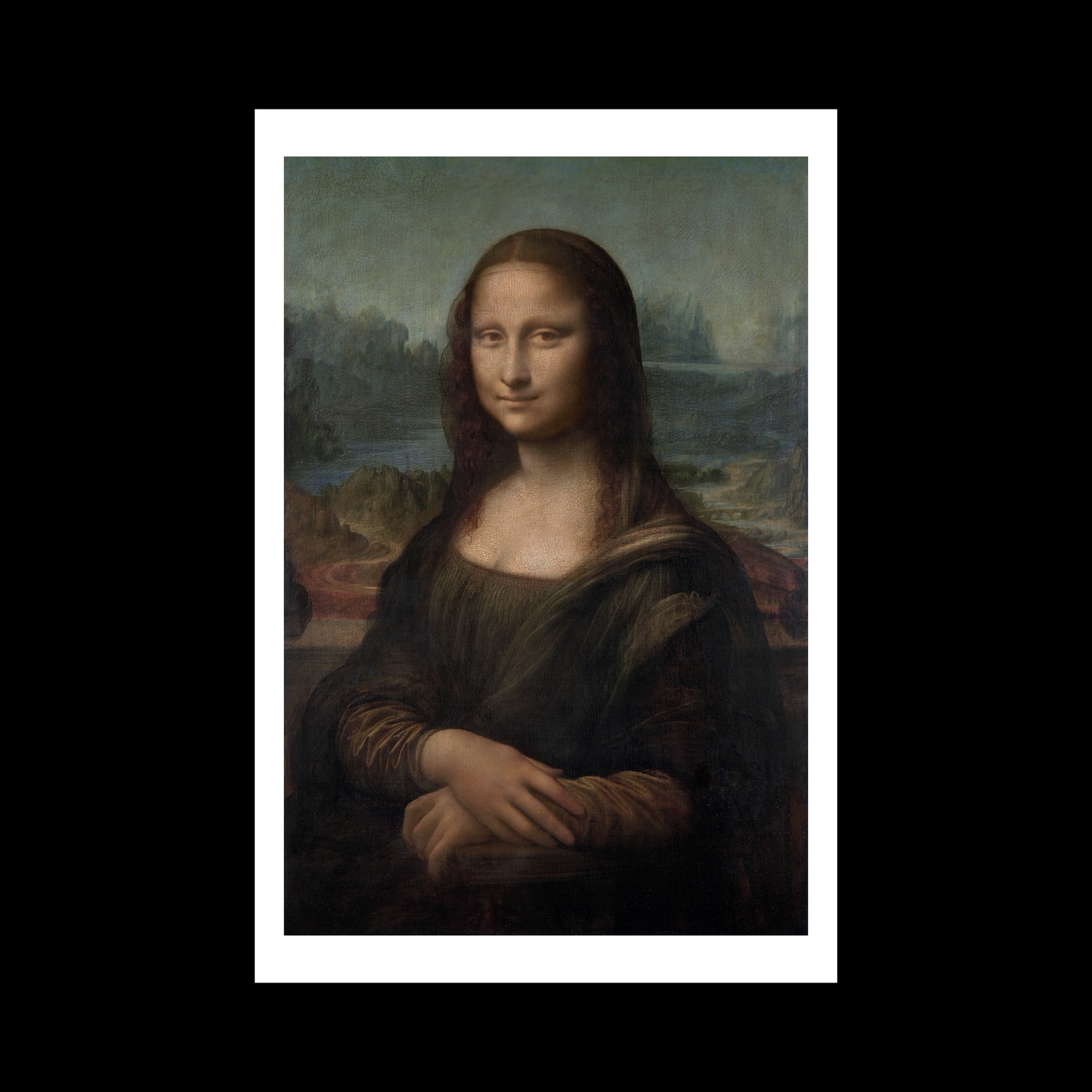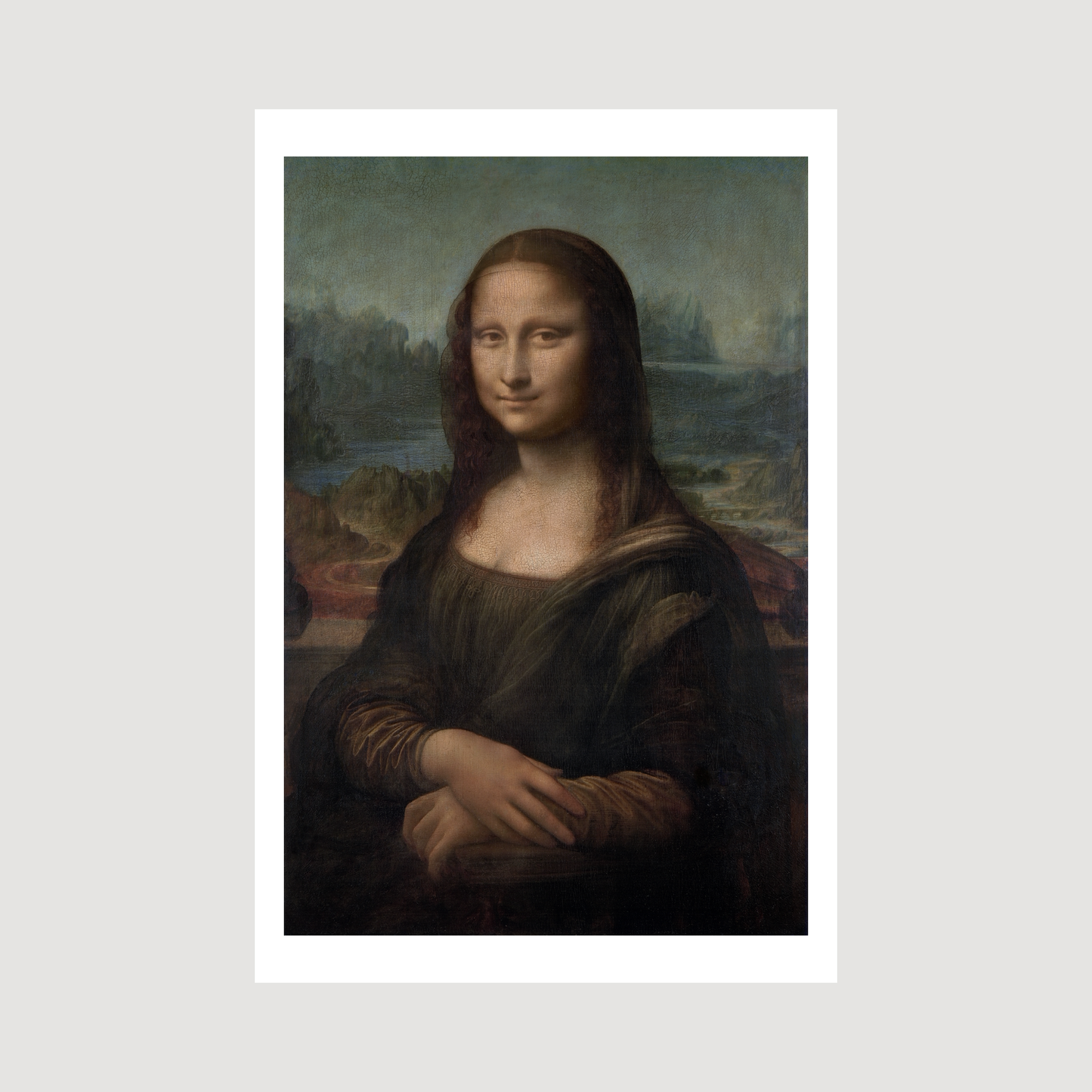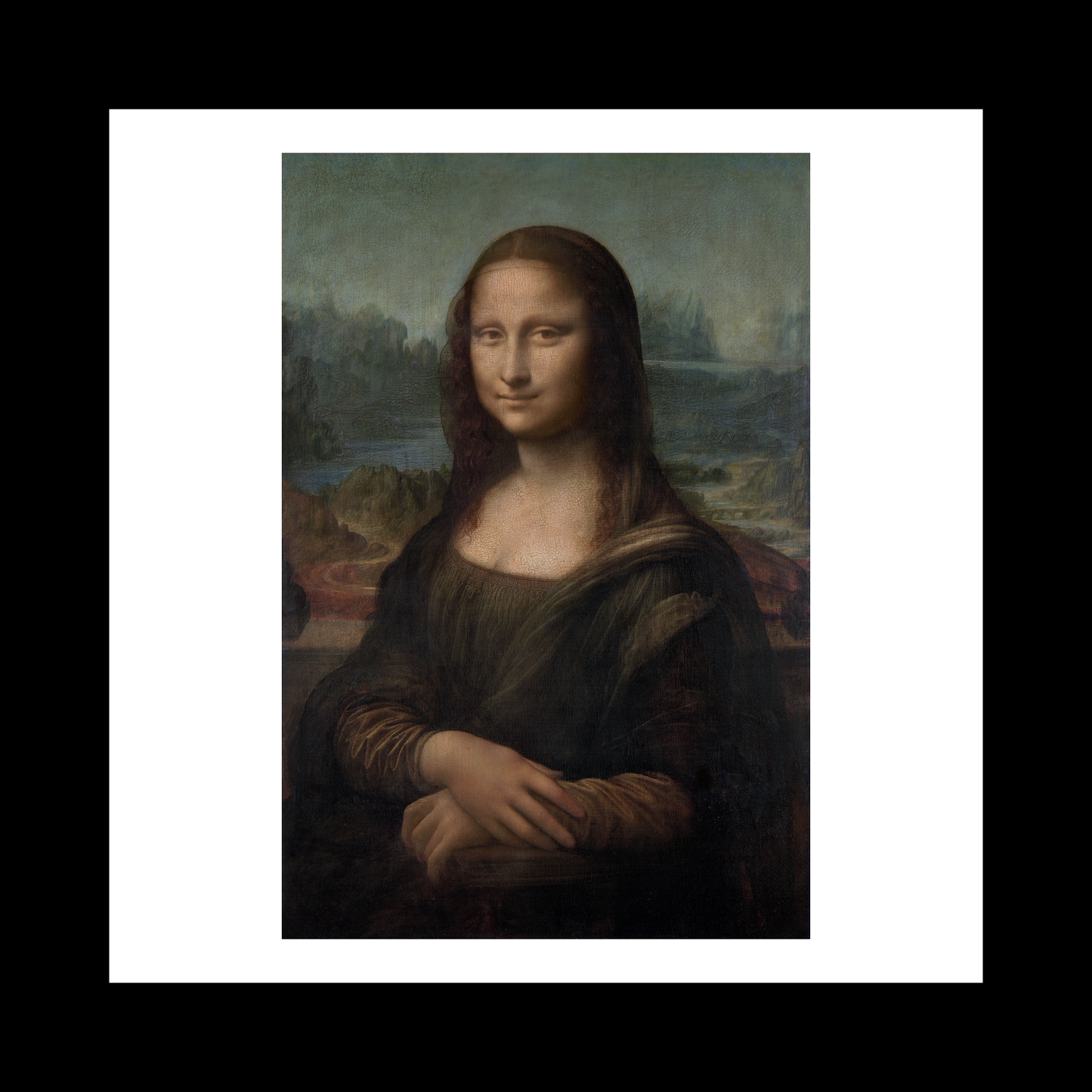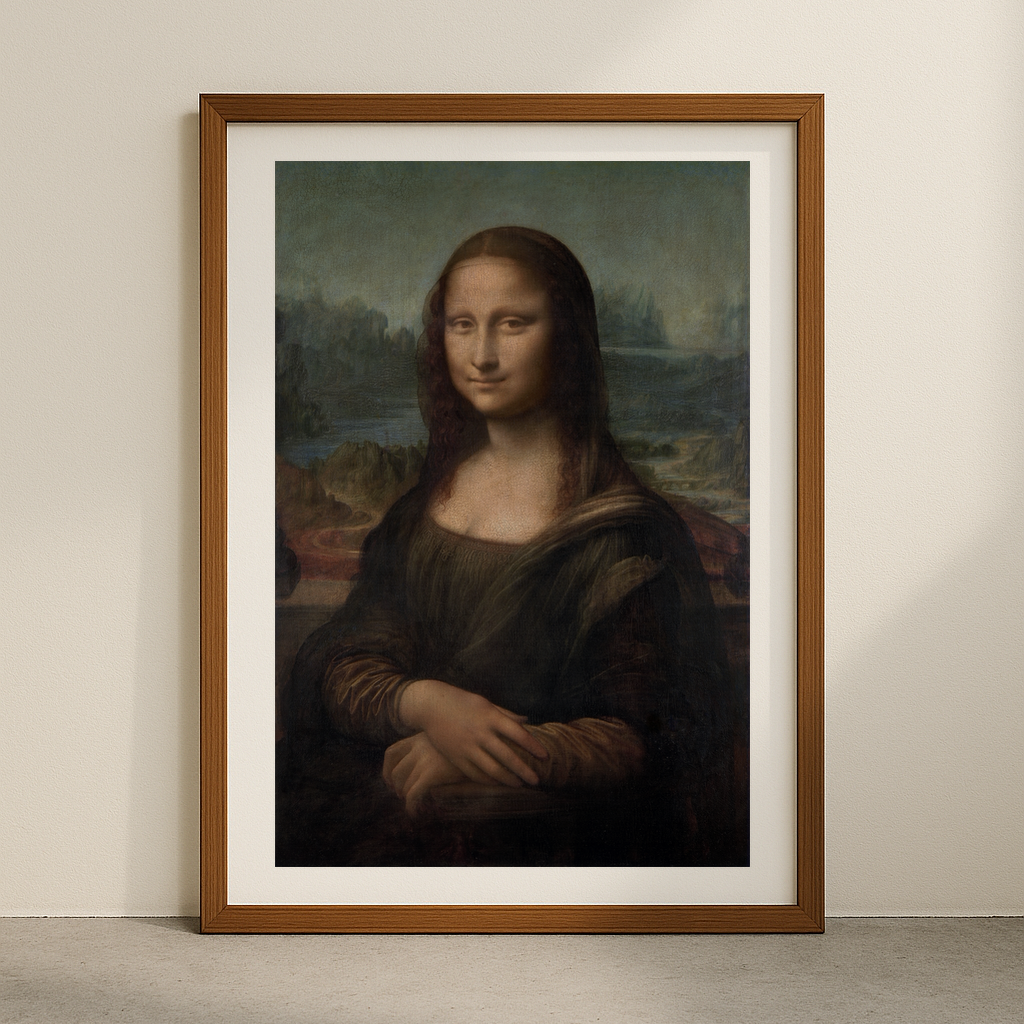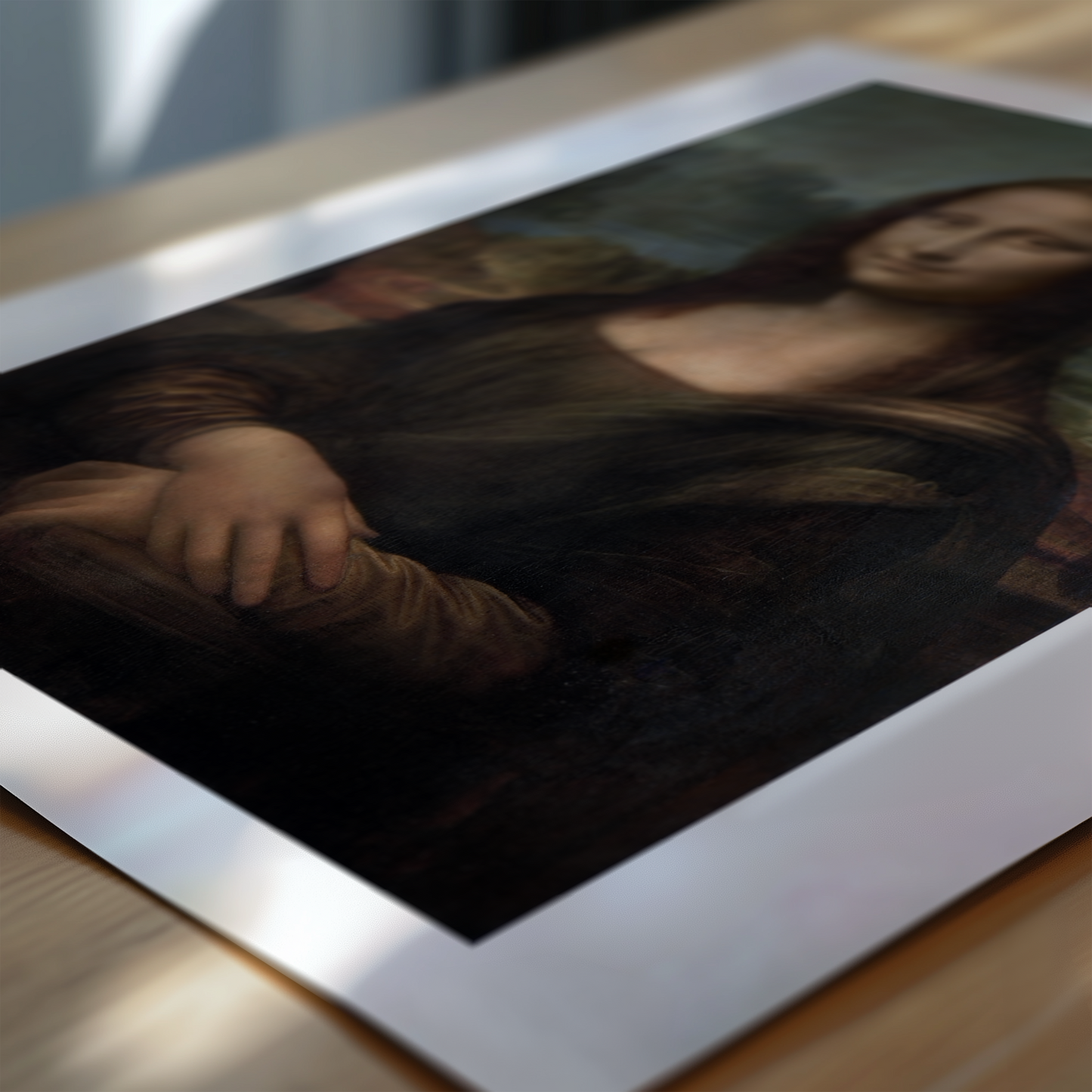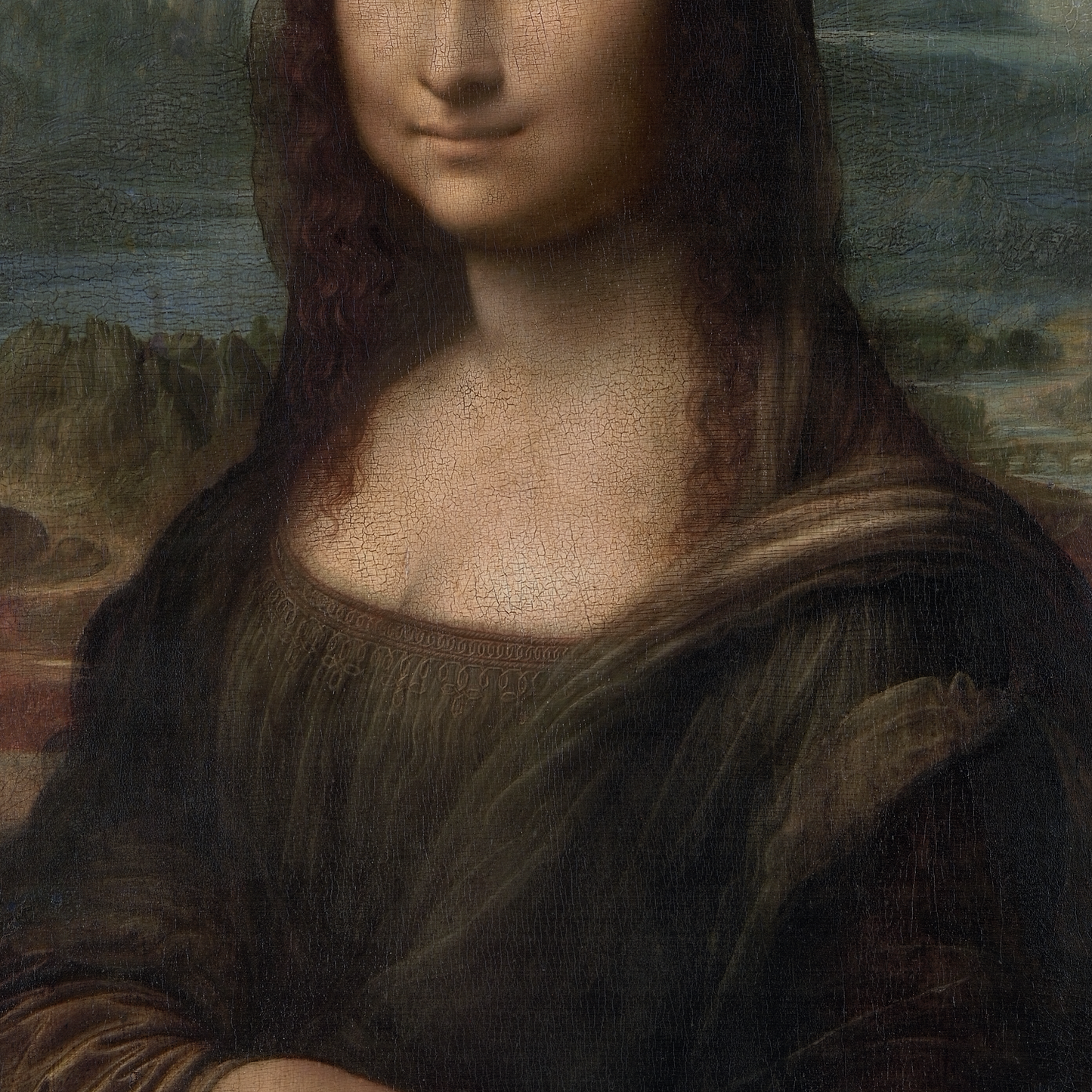1
/
of
6
Mona Lisa (1503-1506)
Mona Lisa (1503-1506)
Regular price
£12.45 GBP
Regular price
Sale price
£12.45 GBP
Taxes included.
Quantity
Couldn't load pickup availability
The Mona Lisa, painted by Leonardo da Vinci between 1503 and 1506, stands as one of the most compelling examples of Renaissance portraiture. The oil painting depicts Lisa Gherardini, the wife of a Florentine silk merchant, in a three-quarter view against a dreamlike landscape. What captivates viewers is the subject's enigmatic smile, achieved through da Vinci's masterful use of sfumato technique - a subtle blending of tones that creates an almost ethereal quality.
Da Vinci's revolutionary approach to this portrait broke from traditional conventions of his time. Rather than painting his subject in strict profile, as was customary, he positioned Lisa in a more engaging, natural pose. The artist spent years perfecting the subtle gradations of tone, particularly around the eyes and mouth, creating what scholars call the uncanny 'Mona Lisa Effect' - the sensation that her gaze follows viewers as they move about.
The background showcases da Vinci's fascination with nature and atmospheric perspective. Winding paths, mysterious waterways, and misty mountains create an imaginary landscape that seems to pulse with life despite its stillness. The painting exemplifies da Vinci's belief that painting was a science, incorporating his studies of human anatomy, geology, and botany. The work's enduring allure lies not just in its technical brilliance, but in its ability to capture what da Vinci called "the motions of the mind" - the fleeting expressions that reveal inner thoughts and emotions.
View full details
Da Vinci's revolutionary approach to this portrait broke from traditional conventions of his time. Rather than painting his subject in strict profile, as was customary, he positioned Lisa in a more engaging, natural pose. The artist spent years perfecting the subtle gradations of tone, particularly around the eyes and mouth, creating what scholars call the uncanny 'Mona Lisa Effect' - the sensation that her gaze follows viewers as they move about.
The background showcases da Vinci's fascination with nature and atmospheric perspective. Winding paths, mysterious waterways, and misty mountains create an imaginary landscape that seems to pulse with life despite its stillness. The painting exemplifies da Vinci's belief that painting was a science, incorporating his studies of human anatomy, geology, and botany. The work's enduring allure lies not just in its technical brilliance, but in its ability to capture what da Vinci called "the motions of the mind" - the fleeting expressions that reveal inner thoughts and emotions.
